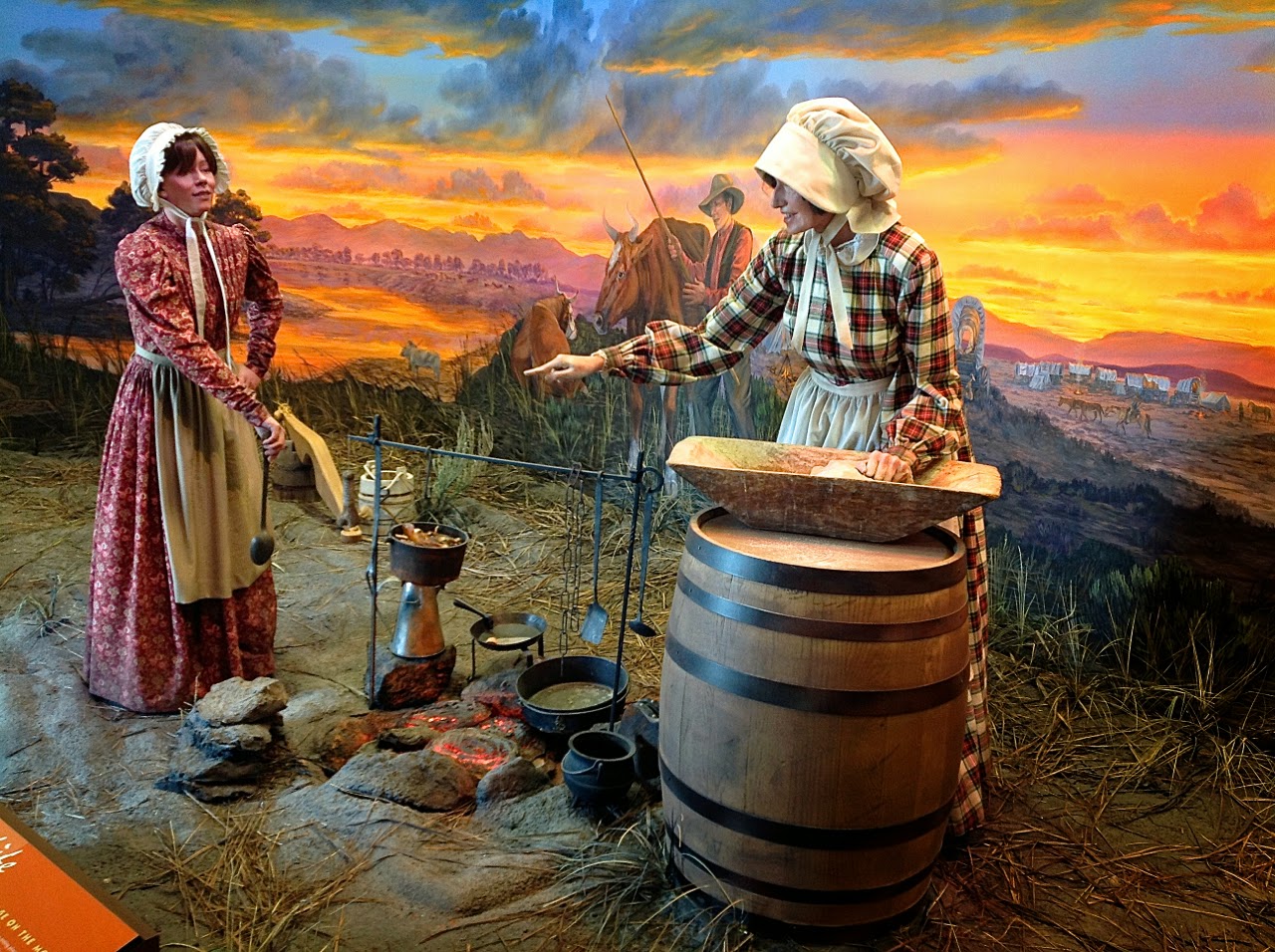After a few days that were mostly traveling, it was time for a break. In our previous visits to Salt Lake City, we have found we prefer the university district because it is attractive, and it has tour sites nearby that we like.
Our first objective was a botanic garden that we had visited once before, Red Butte Garden. The beauty of this place is the Wasatch Mountains, which rise up like a wall right behind Salt Lake City, so that every prospect has a wonderful mountain in the background.
It is such a large place that we decided to take a guided tram tour. Big mistake. Our guide/driver had more personal opinions and stories to share than knowledge about the garden, and we were pleased when she finally allowed us off the cart.
This is not the sort of garden that wows you with a lot of exotic plants. Start with the fact that the climate is dry and windy. Add in budget cuts requiring reduced water usage. As a result, the mission of Red Butte is to educate youth on conservation issues, and to inform adults on gardening appropriate to the area.
This means the garden features drought-tolerant plants—oleander, rabbit bush, very familiar stuff, and plants that are sometimes considered weeds. These are landscaped into attractive gardens.
 |
| Fragrant Plant Garden |
The loveliest flower bed had been designed by a group of artists; it used ordinary plants but their arrangement made that bed very attractive.
By noon the clouds were gathering and the wind was rising, so we decided to move on.
There is no food service at the Garden, but the Natural History Museum of Utah is nearby, and they have a cafeteria, so we decided to eat there; our chicken salad was pretty bad, but it was quick and cheap. This museum is probably quite interesting, but we wanted to tour the art museum at the University of Utah, which was not far away.
The Utah Museum of Fine Arts has improved since our first visit in 2002, and we had a good art experience there. The collection is small and eclectic, but it gives a hint about the art in various periods.
They have several good paintings from the Netherlands in the 1500s, which is quite early. All of them feature parties of some sort.
 |
Pieter Brueghel the Younger, 1564-1638
Dance Around the Maypole, c. 1630 |
For me the big thrill was two lovely paintings by Elisabeth Vigee-Lebrun, right at eye level, with no glass. That was enough to make the visit worthwhile.
 |
Elisabeth Vigée le Brun, 1755-1842
Portrait of Princess Natalia Ivanovna, 1797
|
 |
Elisabeth Vigée le Brun, 1755-1842
Princess Eudocia as Flora, 1799
|
This painting popped out because of its striking technique. The artist is unknown but the work was done in the late 19th century in France. The artist faithfully copied the composition of a woodblock print by the Japanese artist Hiroshige, but he used a highly textured brushstroke, like that of the Impressionists.
 |
Unknown artist, French, late 19th C.
The Whirlpool Naruto. after Ando Hiroshige, early 1890s |
 |
Ando Hiroshige, 1797-1858
The Whirlpool Naruto
Internet grab |
Turning to American art, I have a weakness for moonlight scenes. Ralph Blakelock specialized in them and this is one of his best.
 |
Ralph Blakelock, 1847-1919
Silvery Night, late 19th c. |
Since the museum is in Utah, many paintings depicted the Western landscape and the lives of Indians and cowboys.
 |
Walter Ufer, 1876-1936
Greasewood and Sage, 1930s |
In the sculpture gallery, there were some humorous ceramic works. This self-portrait by Robert Arneson depicts himself holding his breath until he turns blue; don't try this at home.
 |
Robert Arneson, 1930-1992
Breathless (Self-Portrait in Blue), 1976 |
They even had a section of Asian art. Here's a small statue of "The Mother of all Buddhas." It seems appropriate to depict a mother as having four pairs of hands and three faces, since a mother has to play so many roles at once. Actually, each pair of hands is making different symbolic gestures about peace of mind and generosity of spirit, which is also appropriate.
 |
Ushnisavijaya Buddha
“The Mother of All Buddhas”, no date |
When we got back to the car, we found a ticket on the windshield. Parking for the museum is free, if you remember to sign in. Oh well. We made a small contribution to the museum; admission was free.
For dinner we went back across the busy boulevard to the Boulevard Bistro. Dan had an excellent steak. I had roasted beet salad. We liked the service and ambiance, and we enjoyed the experience.





















































